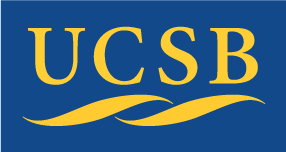|
Geometry, Topology, and Physics Seminar, Fall 2006
Organizers:
Sergei Gukov
and Dave Morrison.
Meets 3:30 - 5:00 p.m. Fridays in South Hall 6635.
This fall, we will study Ricci flow on three-manifolds, with the goal of understanding the basics of Thurston's geometrization program, Hamilton's strategy for completing that program using Ricci flow, Perelman's technical and conceptual advances in Ricci flow which allow the program to be completed, and relations to physics including the analogy with the renormalization flow in two-dimensional quantum field theory.
Other Quarters: [
Fall, 2021;
Winter, 2020;
Fall, 2019;
Spring, 2018;
Winter, 2018;
Fall, 2017;
Spring, 2017;
Wnter, 2017;
Fall, 2016;
Spring, 2016;
Winter, 2016;
Fall, 2015;
Spring, 2015;
Winter, 2014;
Fall, 2013;
Fall, 2012;
Fall, 2011;
Winter, 2011;
Spring, 2010;
Winter, 2010;
Fall, 2009;
Spring, 2009;
Winter, 2009;
Fall, 2008;
Spring, 2008;
Winter, 2008;
Fall, 2007;
Spring, 2007;
Winter, 2007;
Fall, 2006
]
| Sept. 29 |
Dave Morrison (UCSB)
A general introduction to the topic of this quarter's seminar
(see above). We will begin with two-manifolds (i.e., surfaces),
described from the point of view of the Thurston-Hamilton-Perelman
program, and then move on to three-manifolds.
Audio [ mp3,
wma ];
Lecture notes and references.
|
| Oct. 6 |
Dave Morrison (UCSB)
We continue the general introduction to the topic of this quarter's seminar.
Audio [ mp3,
wma ];
Lecture notes;
Slides of the blackboard (courtesy of Amanda Peet).
|
| Oct. 13 |
Daryl Cooper (UCSB)
- Teichmuller space and moduli space for surfaces from pants decompositions.
- Gromov Hausdorff convergence and neck pinching.
- Margulis lemma and short geodesic in hyperbolic manifolds.
- Deforming finite volume hyperbolic 3-manifolds:
figure 8 knot, incomplete structures, Dehn filling, Dehn surgery
space.
- Quasi Fuchsian groups.
- Classification of hyperbolic 3 manifolds
Audio [ mp3,
wma ];
Lecture notes,
Color lecture notes.
|
| Oct. 20 |
Daryl Cooper (UCSB)
- Non-compactness and tameness of 3-manifolds
- Failure of prime decompotion in high dimensions
- JSJ decomposition: the role of tori and Seifert fiber spaces
- Graph manifolds, Cheeger-Gromov collapsing and Ricci flow.
- Cheeger finiteness.
- Real projective structures and the quest for a universal geometry
Audio, part 1 [ mp3,
wma ],
audio, part 2 [ mp3,
wma ];
Slide 1,
Slide 2,
Slide 3;
Lecture notes,
alternate lecture notes.
|
| Oct. 27 |
Mike Freedman (Microsoft Research)
Gluing two manifolds along a common boundary so that the boundary disappears is a fundamental operation of topology. In the spirit of physics we may consider
"superpositions",
i.e., complex linear combinations, of n-manifolds bounding a fixed (n-1)-manifold S. Two such superpositions may be glued along S to yield a superposition of closed n-manifolds. It is known (work with: Wang, Slingerland, Kitaev, and Walker and another study by Teichner and Kreck)) that in dimensions n>3 these pairings can have null vectors, v!=0 yet <v,v>=0. Joint work with Calegari and Walker shows that when n=3 these pairings are positive (lack null vectors). The proof is fun because it uses nearly everything we know about three manifolds. In historical order: loop theorem/Dehn's
lemma, prime decomposition, JSJ decomposition, Geometrization of Haken manifolds, residual finiteness of 3-manifold groups, the unitarity of finite group TQFTs, and crucial Perelman lemmas on Ricci flow/surgery (after Agol et al.). The original motivation for asking about
"positivity"
comes from the study of two dimensional electron gasses (FQHE) and other two dimensional systems that might admit topological phases.
Audio [ mp3,
wma ];
Lecture notes;
Slides of the blackboard (courtesy of Amanda Peet).
|
| Nov. 3 |
Mike Freedman (Microsoft Research)
A continuation of last week's lecture.
Audio [ mp3,
wma ];
Lecture notes v. 1,
Lecture notes v. 2;
Slides of the blackboard (courtesy of Amanda Peet).
|
| Nov. 10 |
Kevin Walker (Microsoft Research)
I'll give a self-contained construction of finite group TQFTs and explain their application to manifold pairings.
Audio [ mp3,
wma ];
Lecture notes
|
| Nov. 17 |
Mike Freedman (Microsoft Research) and Eva Silverstein (Stanford University)
Together with the audience, we wil explore what questions about 3-manifolds
(A) might be useful to physics (stringy physics), and
(B) might be known or addressable by mathematicians.
Audio [ mp3,
wma ];
Photos.
Lecture notes
|
| Nov. 24 |
No meeting: Thanksgiving Holiday
|
| Dec. 1 |
Xianzhe Dai (UCSB)
Ricci flow is a quasilinear, (weakly) parabolic, geometric evolution
equation. Ricci flow with surgery continues the evolution beyond the
finite time blowup singularities. This requires sufficiently fine
understanding of the finite time blowup singularities. We will
discuss Perelman's functionals, no local col\-lap\-sing results, the
ancient kappa solutions, the asymptotic solitons, the canonical
neigh\-bor\-hoods, the standard solutions and surgery construction.
Audio [ mp3,
wma ];
Lecture notes
|
| Dec. 8 |
Dave Morrison (UCSB)
25 years ago, Friedan calculated the one-loop renormalization of
a two-dimensional sigma-model with target space an arbitrary Riemannian
manifold and found that the metric should evolve by Ricci flow.
We will explain this result and its connections to the recent work
of Perelman on Ricci flow.
Audio [ mp3,
wma ];
Lecture notes
|
|
|



